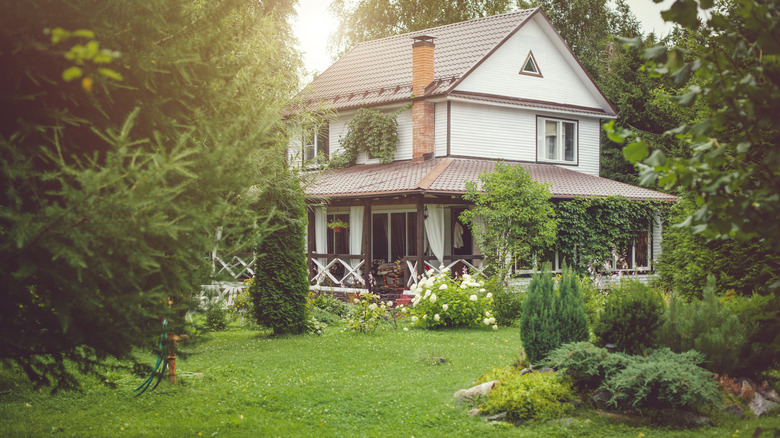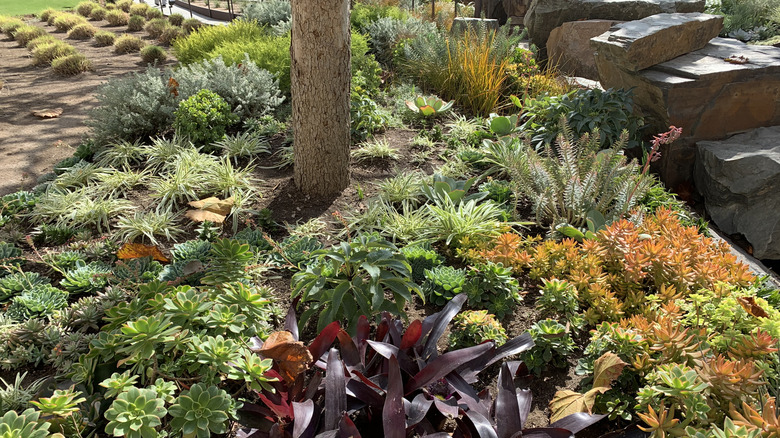The 2025 Landscaping Trend That Will Save You Money On Your Water Bill
In 2025, one of the hottest landscaping trends isn't just about aesthetics — it's about saving money and being environmentally conscious. Drought-tolerant plants are having a moment as homeowners seek to conserve water without sacrificing the beauty of their yards. The appeal of this trend is not hard to see. These low-maintenance plants keep your garden looking full on a budget as they require little watering, which saves you both money on water usage and time spent doing garden prep and maintenance. Gone are the days of costly irrigation systems or nervously watching as your thirsty brown landscape shrivels up like the rest of the world during a heatwave. With drought-tolerant landscaping, your yard can remain lush and vibrant, even when the forecast isn't.
What's driving this shift? Climate change plays a significant role. As unpredictable weather patterns become the norm, droughts occur more frequently, and locally imposed water restrictions become increasingly common, homeowners are looking for plants that can stand up to such challenges. Landscaping that's drought resistant is one of the easiest ways to make your home more eco-friendly, providing a sustainable, practical solution to the growing need for climate resilience. This move toward climate-resilient landscaping is a forward-thinking gardening approach that embraces the notion of collaborating with nature instead of fighting it.
How to choose drought-tolerant plants for your yard
The good news is that giving into this new landscaping trend doesn't have to feel like giving up beauty or variety. Many drought-tolerant plants are attractive and interesting, with unusual textures, bright colors, and year-round interest. In selecting plants, pick kinds that are native to your area. Native plants are adapted to local climates and soils and thus are less likely to need copious amounts of water or fertilizers to thrive. Drought-resistant plants that will thrive without much water include succulents, ornamental grasses, lavender (Lavandula), juniper (Juniperus communis), and rosemary (Salvia rosmarinus).
However, you want to stay away from invasive species, even if they say they're low maintenance. Purple loosestrife (Lythrum salicaria) and Japanese knotweed (Reynoutria japonica), for example, are infamous for aggressively spreading and outcompeting native species, thus harming local ecosystems. Likewise, Russian thistle (Salsola tragus) and tree-of-heaven (Ailanthus altissima) are drought-tolerant but invasive in certain states, so these problematic plants can cause more problems than solutions. These plants can outcompete native flora, disrupt wildlife, and are difficult to control once they start spreading.
Drought-tolerant landscaping isn't just about choosing the right plants, though; it's vital to understand the growing conditions in your yard, too. Overwatering is particularly dangerous, so make sure your soil drains well. Also, put plants with the same water needs together. Though drought-tolerant species are naturally rugged, they do require thorough care to flourish, especially in the initial year while they're getting their roots set. While they mature, it's a good idea to keep the surrounding soil moist by adding a layer of mulch.

